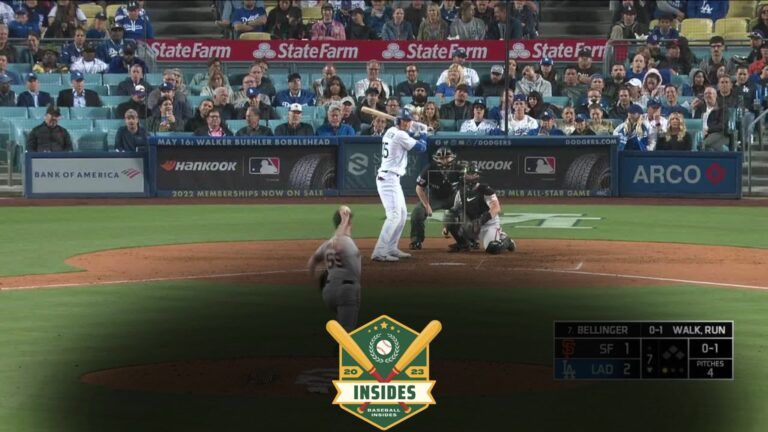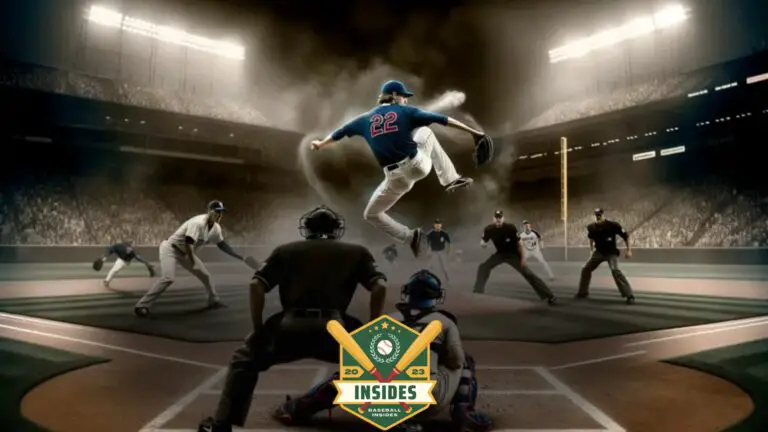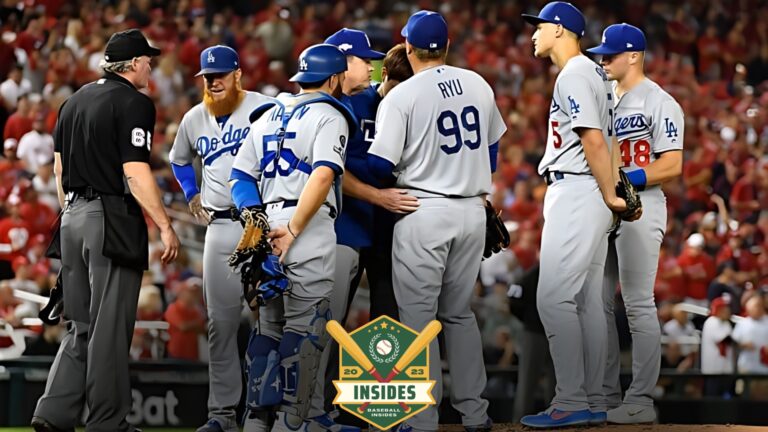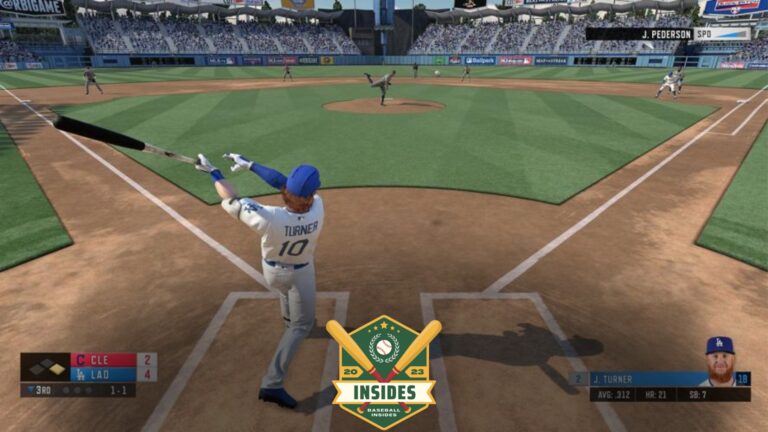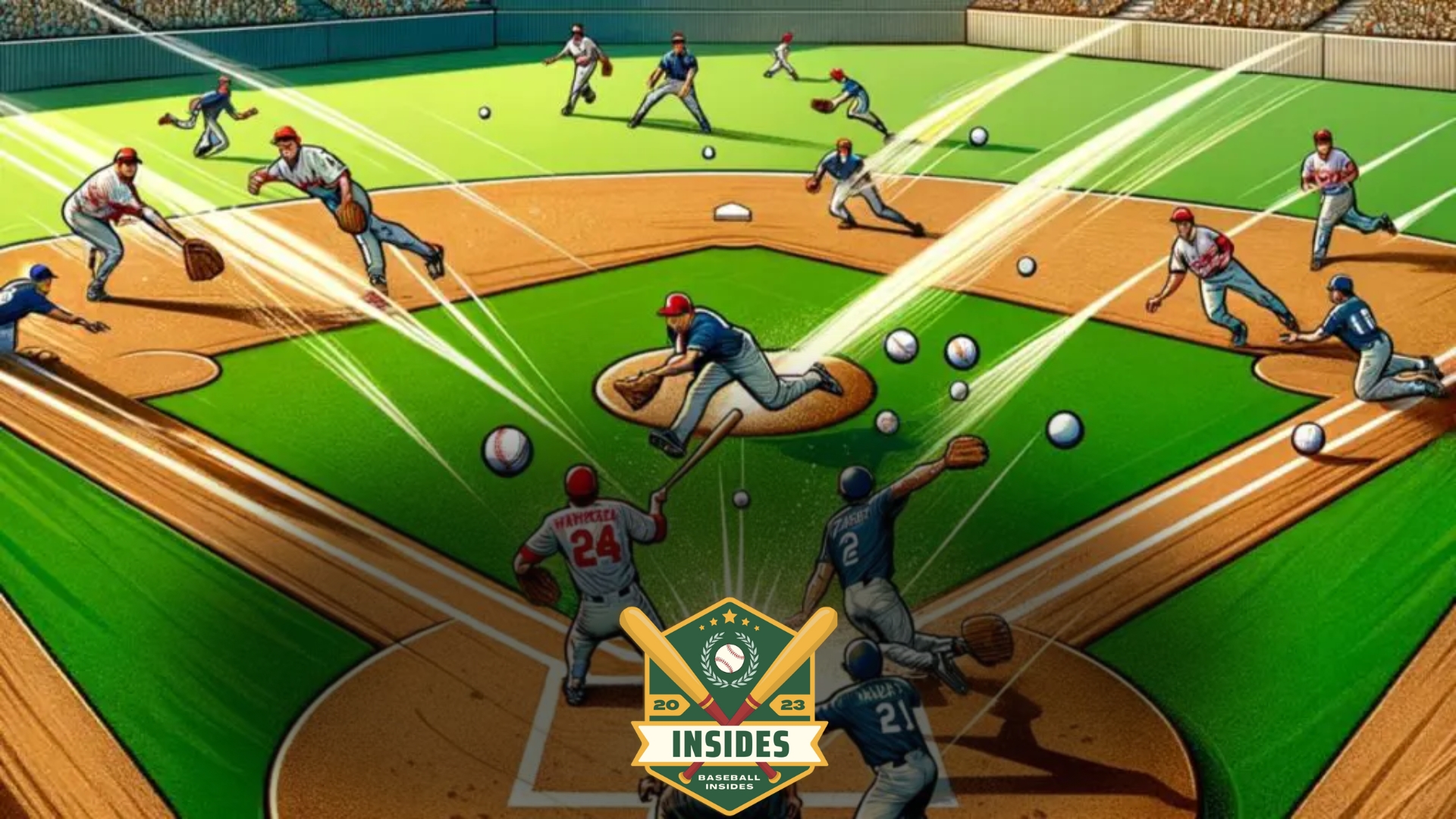
In this article:
Have you ever watched a baseball game and scratched your head at the mysterious acronyms splashed across the stats board?
You’re not alone. Baseball, like many other sports, has its language, a mix of shorthand and abbreviations that can be confusing for the uninitiated.
One of these baseball acronyms, GIDP, is especially important. So, what does GIDP mean in baseball?
GIDP stands for Ground Into Double Play. It’s a statistic that tracks how often a batter hits a ground ball, leading to two outs for his team during his time at bat.
Now that we’ve cleared up the meaning let’s dive a little deeper into the significance of GIDP in the game of baseball.
What Does GIDP Stand For?
So, you’re curious about the cryptic baseball term “GIDP”, huh? Well, let’s dive right into it! GIDP is an abbreviation that stands for “Grounded Into Double Play”.
The Details about GIDP
When a batter hits a ground ball, and two outs are made on the play, we call a “Grounded Into Double Play”. It’s a bane for the offensive team but a boon for the defensive one, often flipping the script in an inning.
The Significance of GIDP
The GIDP stat clearly indicates a batter’s tendency to hit ground balls and their speed, or lack thereof. Because of its significant impact on games, it’s a key data point for baseball analysts and enthusiasts alike.
Examples of GIDP in Baseball
Imagine a perfect sunny day, and you’re watching your favorite team play baseball. The batter steps up, and the pitch comes flying in. Suddenly, a term like GIDP pops up in the commentary.
What does GIDP mean in baseball, you wonder? It’s a quintessential part of the game. GIDP stands for Ground Into Double Play, a situation that often adds a twist to the game.
Now, let’s look at some examples of GIDP in baseball.
Firstly, when exploring the nuances of a Double Play, it’s essential to comprehend “What Is An Assist In Baseball?”. An assist in baseball is credited to a fielding player who helps in making an out, which is a fundamental aspect of executing a successful GIDP or Ground Into Double Play.
This term highlights the teamwork and quick reflexes needed to turn two outs efficiently.
A Classic Double Play
In a classic double-play scenario, runners are on first and second base. The batter hits a ground ball to the shortstop.
The shortstop steps on second base himself (one out), then throws the ball to first base, where the batter is out (that’s two!). That’s a GIDP, folks!
Example of a 6-4-3 Double Play
Another commonly seen GIDP is the 6-4-3 double play. In this case, the batter hits a ground ball to the shortstop (position 6), who throws the ball to the second baseman (position 4) to get the runner out at second base.
The second baseman throws the ball to the first baseman (position 3), taking out the batter. Voila, another GIDP situation!
GIDP and the Pitcher
Interestingly, GIDP also reflects on the skills of the pitcher. A pitcher who consistently forces batters into GIDP situations is highly valued for his ability to get out of tight spots during a game.
A great example was pitcher Kevin Brown, who led the major leagues with 36 GIDPs in 1999.
GIDP is more than just a term; it’s a game-changing baseball moment. It can swing the game’s momentum, showcasing the strategic depth that makes baseball an exciting sport.
How is GIDP Recorded in Baseball?
Have you ever wondered how that all-important GIDP statistic is recorded in baseball? Settle in and dive into the nitty-gritty details of this intriguing facet of America’s favorite pastime.
The Art of Notation
Like every other baseball statistic, GIDP (which stands for Ground Into Double Play) is uniquely recorded. This stat pops up when a batter hits a ground ball, leading to two outs in one play. Now, that’s a rough day at the plate!
The Scorebook Page
Every recorded statistic in baseball finds its home on a scorebook page, and GIDP is no exception. The official scorer scribbles the term ‘GIDP’ right next to the batter’s name. This little notation carries great weight, as it’s often used to evaluate a player’s overall performance.
Understanding the Significance of GIDP
It’s important to note that a high GIDP stat isn’t always a bad thing. Yes, that’s right! It could also mean that the batter hits many ground balls and gets a lot of chances at the plate.
Remember, even the negative stats at first glance might have a silver lining in baseball.
Famous Players with High GIDP Records
Some players can’t be ignored when we talk about GIDP in baseball. These are the heavy hitters who, despite their talent, have tallied an unfortunately high number of Ground Into Double Plays throughout their careers.
Cal Ripken Jr.
Cal Ripken Jr. is a classic example. Remembered as one of the sport’s greats, Ripken also holds the record for the most GIDPs in a single season. In 1985, he racked up an astonishing 32.
Ivan Rodriguez
Another player often associated with GIDP is Ivan Rodriguez. Over his 21-year career, he accumulated 337 GIDPs, making him one of the all-time leaders.
Albert Pujols
And then, we have Albert Pujols. Despite being one of the most prolific hitters in Major League Baseball history, Pujols has the dubious distinction of leading all active players in GIDP.
Miguel Tejada
Let’s not forget about Miguel Tejada. Despite a successful career, he’s another player who is known for frequently grounding into double plays.
These players are a reminder that even the greats have their off days. While GIDP isn’t a statistic any player wants to lead, it’s an inevitable part of the game that even the best can’t always avoid.
Strategies to Avoid GIDP in Baseball
Sliding into home base, the crowd’s excitement echoing in your ears, the thrill of the game – it’s all part of what makes baseball such a beloved sport.
But amidst all the excitement, there’s strategy and technique, especially when avoiding a Ground Into Double Play (GIDP).
So, how do you dodge this dreaded outcome? Let’s dive in.
Heightened Awareness and Quick Decision Making
First and foremost, it’s crucial to be aware of the situation. Recognize when a GIDP opportunity exists for the opposing team.
If there are less than two outs with runners on first, second, or third base, you’re in a potential GIDP situation. Quick decision-making becomes your best friend here.
Perfect Your Swing
Next, let’s talk about your swing. Aiming for line drives or fly balls rather than ground balls reduces your risk.
Practice makes perfect, so spend time refining your swing to avoid hitting the ball too low.
Mind Your Speed
Don’t forget about your speed. It’s a crucial part of avoiding a GIDP. The quicker you can run from home to first base, the less chance there is for a double play. Speed training should be a regular part of your practice.
Mastering the Bunt
Finally, mastering the art of the bunt can also help keep a GIDP at bay. A well-executed bunt can disrupt the defense and prevent that swift throw to first base. However, bunting requires precision and practice, so don’t underestimate its skill level.
Remember, baseball, like any sport, is as much about strategy as physical skill. By keeping these tips in mind and practicing regularly, you can avoid being the victim of a GIDP and keep the game moving in your favor.
Additionally, the effectiveness of a double play is deeply rooted in the dynamics of the team on the field. This brings us to the question, “How Many Players Are On The Field In Baseball?”. Understanding that there are nine defensive players on the field is crucial because each player’s position and readiness can dramatically influence the outcome of a GIDP.
GIDP vs. Other Baseball Statistics
Now, you’re probably familiar with batting averages, home runs, and RBIs, but have you ever thought about how GIDP stacks up against these other baseball stats? Let’s dive into the comparison.
GIDP and Batting Averages
First up, batting averages. This stat measures a batter’s success at the plate, excluding walks and sacrifices. Yet, it tells us nothing about a hitter’s tendency to ground into double plays. That’s where GIDP shines!
GIDP and Home Runs
Next, let’s consider home runs. They’re exhilarating, no doubt, but they show a batter’s power, not their potential to cause double plays. Enter GIDP. It is a contrasting statistic, showcasing a less glamorous but equally crucial aspect of the game.
GIDP and RBIs
Lastly, RBIs, or Runs Batted In, show a player’s knack for clutch hitting. However, they don’t reveal if a player tends to wipe out base runners with double plays. GIDP fills this gap, providing a fuller picture of a batter’s performance.
In conclusion, GIDP may not be as flashy as the other stats, but it holds its own by highlighting a unique aspect of a player’s game.
So, don’t forget to check out the GIDP next time you’re poring over baseball statistics!
Lastly, the sequence “6 4 3” is a perfect illustration of a common double play combination and ties directly into the concept of a GIDP. When someone asks, “What Does 6 4 3 Mean In Baseball?”, they’re referring to a specific play where the shortstop (6), the second baseman (4), and the first baseman (3) work in seamless coordination to achieve a double play. This sequence not only demonstrates the players’ skill but also the strategic planning that goes into preventing the opposing team from scoring.

FAQs
1. What Does GIDP Stand for in Baseball?
GIDP stands for “Ground Into Double Play”. It’s a statistical record given to a batter who hits a ground ball, resulting in two outs.
2. How Does a GIDP Situation Occur?
A GIDP situation occurs when there are runners on the bases, and the batter hits a ground ball fielded by the defense and turns into a double play.
3. Does GIDP Count Against a Batter’s Average?
Yes, a batter’s average is negatively affected by GIDP because it counts as an at-bat but not a hit.
4. Who Holds the Record for the Most GIDP in a Season?
The record for most GIDP in a single season is held by Jim Rice, who grounded into 36 double plays in 1984.
5. Can a GIDP Happen With the Bases Loaded?
Yes, a GIDP can happen even with the bases loaded. It’s less common but can still occur.
6. Is GIDP Considered a Good or Bad Statistic for a Batter?
Typically, GIDP is viewed as a negative statistic for a batter, as it means the player has caused two outs with a single swing.
7. How Does a Team’s Defense Execute a GIDP?
A team’s defense executes a GIDP by fielding the ground ball, making an out at one base, and then throwing to another base for a second out, all before the runner can reach safely.
8. Who Holds the Career Record for Most GIDP?
The career record for most GIDPs is held by Albert Pujols, who has over 400 GIDPs.
9. Can a Batter Avoid a GIDP Situation?
A batter can try to avoid a GIDP situation by hitting the ball in the air, bunting, or hitting it away from fielders, but it’s not always possible to control.
10. Are There Any Strategies to Prevent GIDP Situations?
Teams often use strategies like the hit-and-run or bunting to prevent GIDP situations, but ultimately, it’s up to the batter’s skill and a little bit of luck.
Conclusion
Wrapping up, the term GIDP in baseball stands for “Grounded Into Double Play”. This phrase gets thrown around when a batter hits a ground ball, leading to two outs in one play.
It’s an action-packed moment that can switch up the game’s momentum, leaving fans on the edge of their seats.
GIDP is not just a statistic for the player who hits the ball, but it also gives us a glimpse into the defensive skills of the opposing team. How they handle these situations can make or break a game.
Whether you’re a seasoned baseball enthusiast or a newbie just trying to decode the jargon, understanding terms like GIDP can enhance your appreciation for the sport’s intricate dynamics.
So next time you hear “GIDP”, remember – it’s not just about the batter. It’s about the game!


